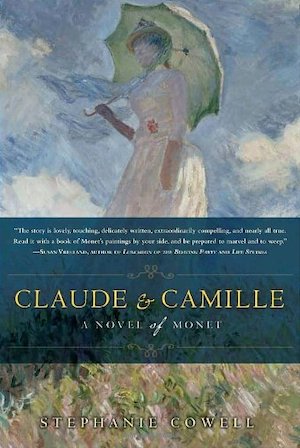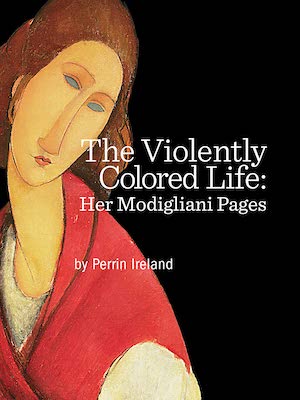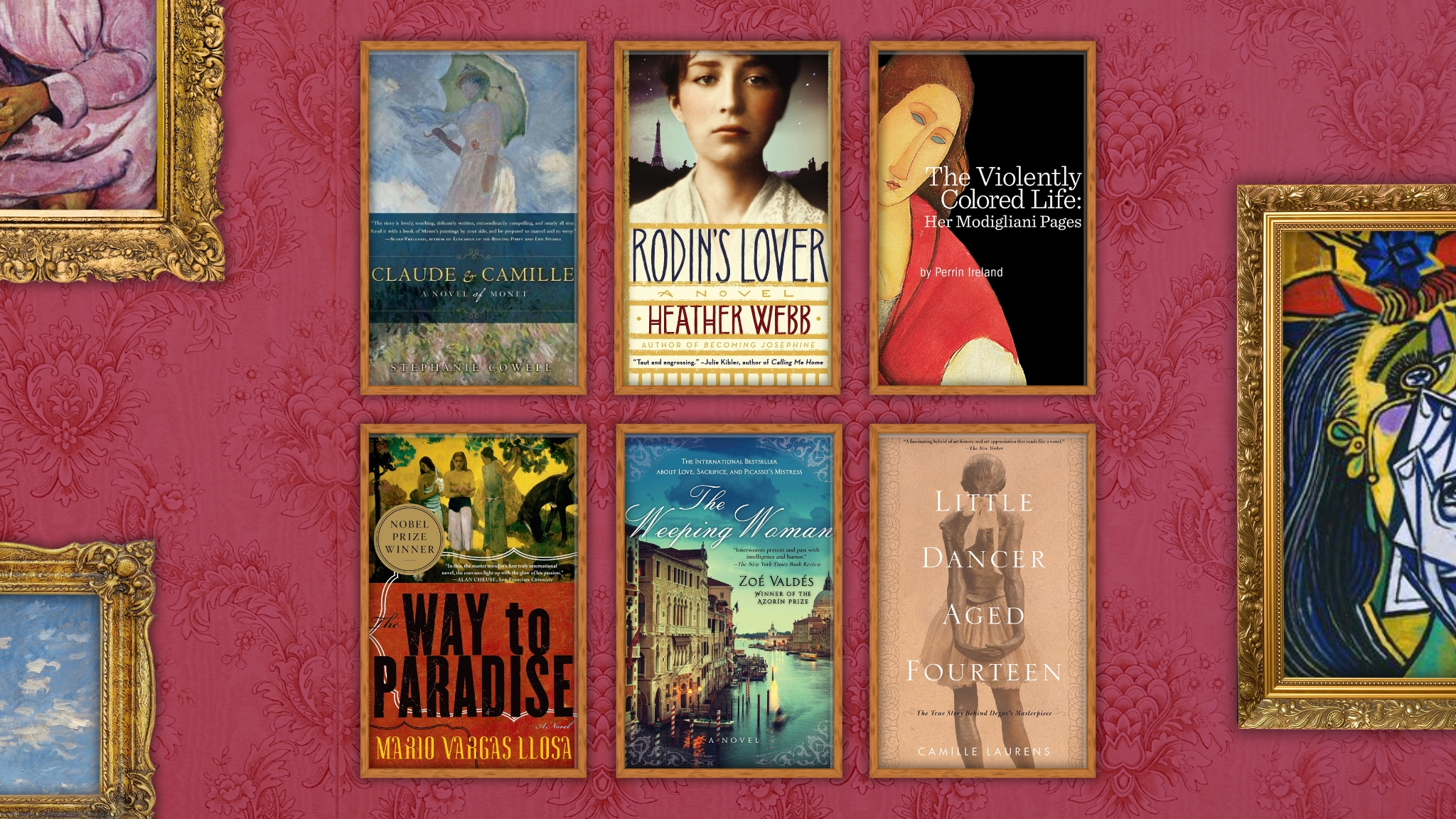Monet, Picasso, Rodin. These names have gone down in history as essential and influential visionaries who have shaped our idea of art and culture. But what about those who supported these artists? All these men had women behind the scenes who helped them in their careers and modeled for their art pieces. Many of these unsung women were also artists in their own right, though their work rarely reached the notoriety of their male peers.
While these women’s names may not hold the same weight as the artists who rendered their appearances, they still have a place in the annals of history. Six historical fiction writers strive to portray these women as fully-formed beings, rather than simply paint on a canvas or sculpted clay. These novels challenge the notion that these women are simply a footnote in male artists’ stories of success.

Claude & Camille by Stephanie Cowell
Whether you’re an art aficionado or merely a casual enjoyer, you’re undoubtedly familiar with his garden, his water lilies and his name. The father of the French Impressionist movement, Claude Monet is a historical icon to us now — but at the start of his career, he’s a penniless artist who runs away from his family business to pursue art in Paris. There, he meets the high-class Camille Doncieux and the two quickly fall in love. But their union comes at the cost of Camille’s family’s approval, and when Monet is unable to sell his paintings, the young couple must face destitution and struggle. Author Stephanie Cowell depicts a tender story of love amid hardship and the sacrifices we make for those we care for.

The Weeping Woman by Zoé Valdés, translated by David Frye
A novel within a novel, this winding tale transforms the tragic story of Dora Maar, Picasso’s once-lover and victim, into searing journey of introspection for both the protagonist and reader. As a writer begins writing a novel centering around Dora Maar, she retraces the late artist’s steps, pondering the questions that Maar’s death left unanswered. What truly went down between her and Picasso, ending their tumultuous affair? What drove his friends to commit her to an asylum? And what went down during her trip to Venice, causing her to become a recluse up to her death? As the writer follows Maar’s life journey, she begins to see an unsettling resemblance between their own lives — an entanglement that her pursuit of the truth is only increasing. This mind-bending novel shines a light on an unsung member of the Surrealist movement, and a woman overshadowed.

The Violently Colored Life: Her Modigliani Pages by Perrin Ireland
Written as the fictional memoir of artist Jeanne Hébuterne, the common-law wife of Amedeo Modigliani, this novel captures the inner world of a woman stifled by the patriarchy and overwhelmed by her roles as a wife and nurse to her ailing husband, and mother to her children. Hébuterne’s fictional musings detail her life as an artist in the cultural crucible of 20th century Paris. But her writing also contains foreboding hints at the misfortune that will strike her in these next coming months — the very months leading up to her death. Author Perrin Ireland weaves a rich tapestry of life as a woman on the edge of an elite artistic circle, beholden to and burdened by those she loves. Spanning topics from marriage and motherhood to war and mortality, The Violently Colored Life dazzles in its multifaceted portrayal of Hébuterne.
Read our full review of the novel here.

Rodin’s Lover by Heather Webb
While they share a name, Claude Monet’s wife and Auguste Rodin’s lover have startlingly different fates. An artist in her own right, Camille Claudel first serves as Rodin’s apprentice before the two become romantically involved. Their affair sullies her reputation, which was already scandalous enough, given her status as a woman sculptor. Claudel’s prospects worsen as Rodin’s more successful sculptures starts bearing a resemblance to her own — or perhaps vice versa. Her life and her work have both become inextricably tied to Rodin’s in a way that threatens to destroy them both. A labyrinthine story of love, talent and tragedy, Rodin’s Lover makes us question where to draw the line between devotion and obsession.

The Way to Paradise by Mario Vargas Llosa, translated by Natasha Wimmer
Winner of the Nobel Prize in Literature in 2010, The Way to Paradise is a story of two individuals linked by bloodline, both driven by a fiery passion for life that leads them down two wholly separate paths. In 1844, Flora Tristán harnesses her ferocity to demand her inheritance from an absent father, and demand rights for the downtrodden through her role in the Workers’ Union. In 1891, her grandson — the not-yet famous painter Paul Gauguin — abandons France for the sands of Tahiti in pursuit of true artistic freedom. There he finds ample inspiration for his paintings — particularly in the teenage girls he takes as his wives and muses. A diptych of ambition and abandonment, of two figures and the conflicting lives they lead, The Way to Paradise is a dizzying novel that captures the messiness of humanity.

Little Dancer Aged Fourteen by Camille Laurens
This last book is unique in that it manages to be both fact and fiction, thanks to knowing so tragically little about the model behind this iconic sculpture. While much of Marie van Goethem’s identity has been lost to time, author Camille Laurens painstakingly pieces together what life she may have lived. The result is a harrowing story of a young girl residing in Paris’s dark underbelly, working as a “little rat” — the term for young girls who would scurry backstage in the Paris Opera, earning pennies for small parts in the ballets. Her story is one of suffering and sorrow — and the hope that this new artist who she models for will help her support her family. This poignant tale reaches across the centuries to remind us of the real people behind these great works of art — not just the artists, but the human beings they depicted.




